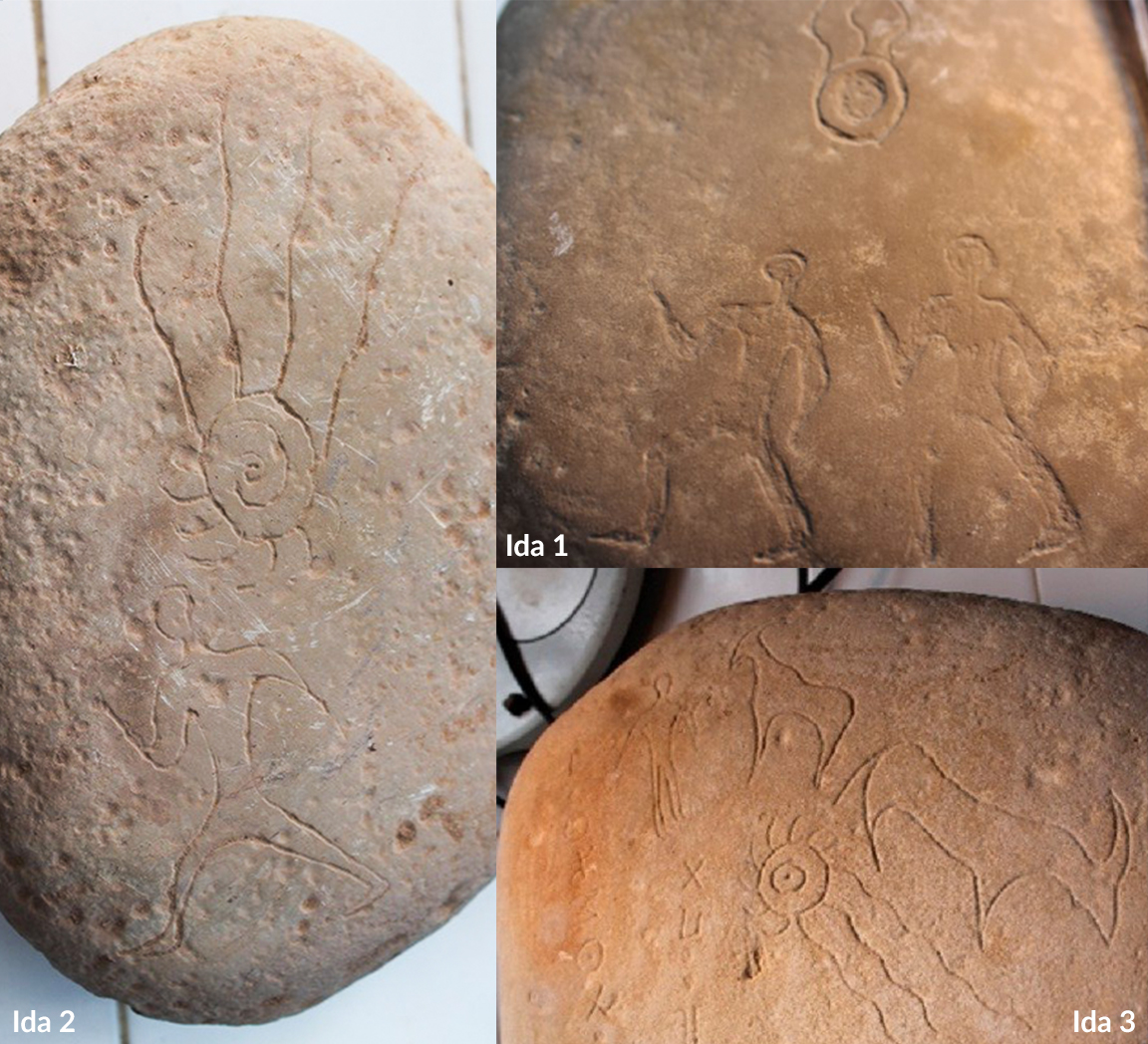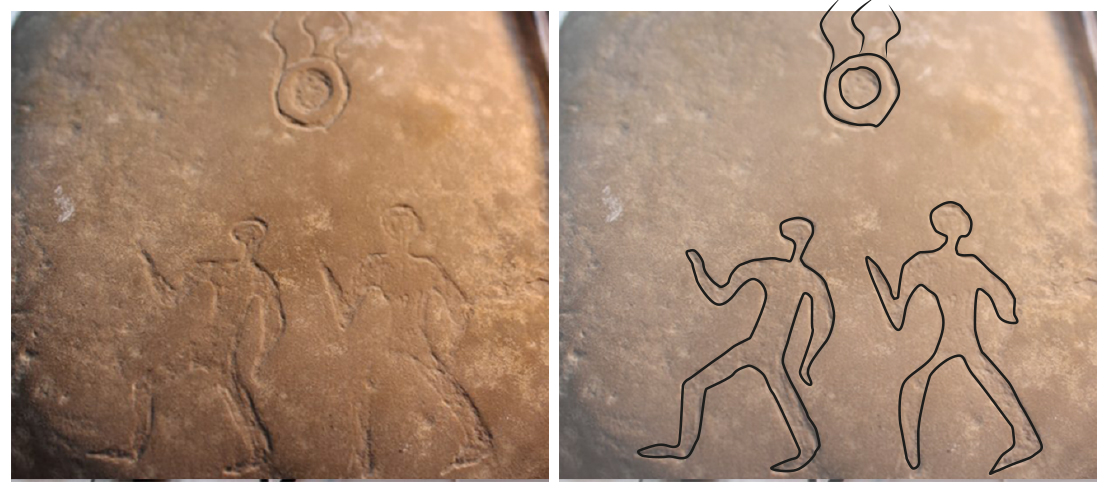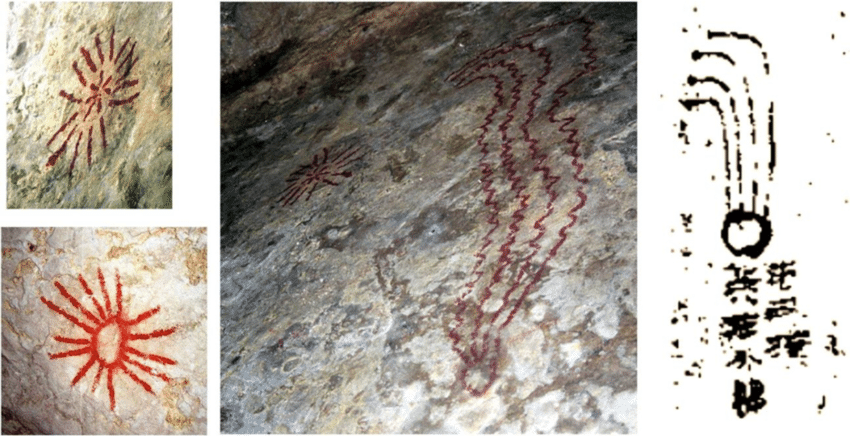The pre-history of Morocco goes back thousands of years, as is evidenced by the many rock art engravings or petroglyphs in many areas. Three petroglyphs found near Ida Ou Kazzou could suggest that ancient Moroccans observed meteorite falls.
The new discovery was conducted by Moroccan researcher and IMO member Abderrahmane Ibhi and by Fouad Khiri, Lahcen Ouknine, Abdelkhalek Lemjidi, and El Mahfoud Asmahri. Moroccan researchers compared the engravings to other petroglyphs discovered previously in the region and also gathered testimonies from eyewitnesses of the fall of the Tissint meteorite in 2011, to reach the conclusion that the petroglyphs date back to ancient time, albeit not providing an idea on how old the engravings are.

The first petroglyphs (called Ida1 by the Moroccan research team) offers a scene of two people seemingly distraught by the fall of a meteor. Identically on the 2nd one (Ida2), Ibhi and his team identified a scene that includes a fleeing anthropomorphic and what it looks like a huge fireball.

On the third petroglyph (Ida3), the engraved scene includes an anthropomorphic, two cattle of different sizes, what it looks like a meteor and a figurative representation of the Sun with concentric circles in the center.
Ibhi and his team noted that the typology of these objects is very similar to the meteor engraving of Toca do Cosmos (Bahia, Brazil) and that of the rock painting in the Fouriesburg district (South Africa). Both artifacts are suspected to depict meteorite falls.

Ibhi and his team came to the conclusion that “these sculptures are those of a meteor, the three petroglyphs seem to represent the impact of a great meteorite that has frightened the inhabitants and that the artist has certainly experienced this astronomical event spectacular enough to be recorded on the rock“. Note that as suggest by J.F. Thackeray (Transvaal Museum, Pretoria) in 1988, comets and meteors have been conceptually associated with trance among at least some population groups in Southern Africa. The depiction of a stripe-like object (comet or meteor) in some prehistoric paintings and engravings, juxtaposed with human figures could reflect conceptual associations with trance experience rather than a specific astronomical event. Too bad prehistoric people didn’t have access to your online fireball report!
Source link





Комментариев нет:
Отправить комментарий